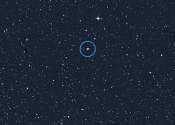Astronomers confirm extended atmosphere on accretion disk of X-ray binary
Astronomers use stellar eclipses to study the atmosphere of accretion disks around compact stars. SRON-researchers observed this method on a low-mass X-ray binary. They find a thicker atmosphere than predicted and distinguish ...







